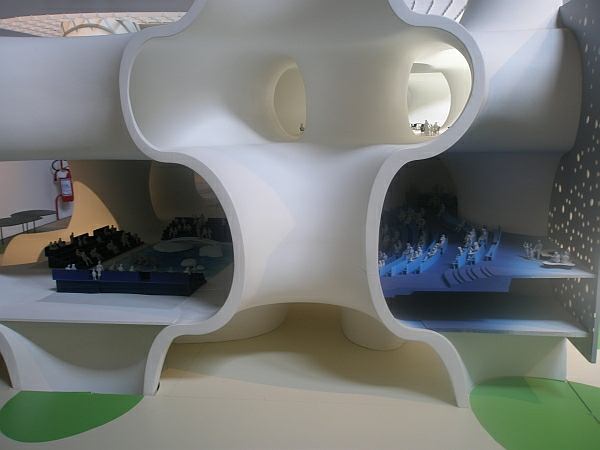Flexible Spaces Rethought
Public and Personal Places
Text: Brigitta Bugya
Photos: Eszter Götz, Edit Pálinkás
The personality of a trustee is undoubtedly matched with a strong Japanese presence, as it is also proven by the examples referred to here. The evolution of the dwelling house as the basic unit of the city and personal space was triggered by the Japanese pavillion via the example of Tokyo, which is not by accident. As the trustees of the pavillion (Koh Kitayama, Yoshiharu Tsukamoto and Ryue Nishizawa) admit, the city or more precisely the megapolis appears as an architectural „playground” or laboratory. Despite its unique characteristics, Tokyo is now living in its fourth cycle of renewal since the 1920s focussing on the spaces of everyday life after the construction of large fashion houses by the world brands and the slow-down of economic growth. Architectural solutions – tailor-made designing to suit individual needs and spaces flowing into one another – are well worth paying attention to, However, this intensive concentration on the individual human being and their personal space as well as the interpretation of the urban structure as a starting point mark a serious change in Japanese architecture revealing the radical reinterpretation and – to some extent – overwriting of dwelling machines produced by metabolism, an architectural trend now with a past of 50 years in Japan.






